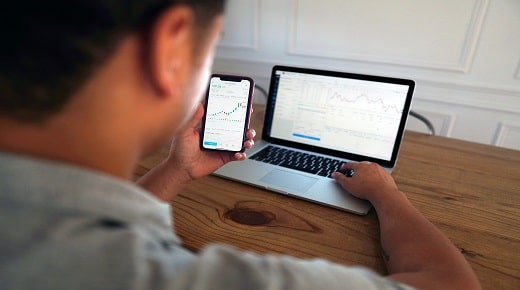Introduction:
The world of trading has undergone a remarkable transformation in recent years, driven by advancements in technology. One notable development is the increasing use of trading bots, which are automated software programs designed to execute trades on behalf of traders. These bots have revolutionized the way trading is conducted, offering speed, efficiency, and adaptability to changing market dynamics. This article explores the evolution of trading and how traders are adapting to market dynamics with the help of frontrun bot.
- The Rise of Algorithmic Trading:
Algorithmic trading, also known as automated or systematic trading, marked a significant shift in the trading landscape. It involves using computer algorithms to execute trades based on predefined rules and strategies. Algorithmic trading enables traders to capitalize on market opportunities with speed and precision, leveraging vast amounts of data and complex mathematical models. Trading bots serve as the execution engines for algorithmic trading strategies, executing trades based on pre-programmed rules and indicators.
- Speed and Efficiency:
One of the key advantages of trading bots is their ability to execute trades at lightning speed. Unlike human traders, who are bound by limitations of manual execution, bots can instantly analyze market conditions, identify trading opportunities, and execute trades within milliseconds. This speed advantage is particularly crucial in high-frequency trading (HFT), where even a small delay can result in missed opportunities. Bots ensure that trades are executed swiftly, enabling traders to take advantage of fleeting market conditions.
- Adapting to Market Dynamics:
Markets are dynamic and constantly evolving, driven by various factors such as economic indicators, news events, and investor sentiment. Traders need to adapt their strategies to capitalize on changing market dynamics, and trading bots provide the flexibility to do so. Bots can be programmed to monitor market conditions in real-time, automatically adjust trading parameters, and execute trades accordingly. This adaptability allows traders to stay ahead of the curve and make informed decisions in rapidly changing market environments.
- Leveraging Data and Analytics:
Data plays a pivotal role in modern trading, and trading bots excel at processing vast amounts of data to derive actionable insights. Bots can analyze historical price patterns, technical indicators, and market trends to identify potential trading opportunities. By leveraging data and applying advanced analytics, bots can generate trading signals and execute trades based on predefined strategies. This data-driven approach helps traders make more informed decisions and increases the probability of successful trades.
- Risk Management and Decision Support:
Trading bots offer advanced risk management features that help traders mitigate potential losses. Bots can be programmed to automatically set stop-loss orders, trailing stops, and other risk management parameters to protect trading capital. Additionally, bots can provide decision support by analyzing risk-reward ratios, calculating position sizes, and suggesting optimal entry and exit points. This helps traders maintain discipline and adhere to their risk management strategies, reducing emotional biases often associated with manual trading.
- Enhanced Market Monitoring:
Monitoring multiple markets and instruments simultaneously can be challenging for human traders. Trading bots, on the other hand, excel in multitasking and can monitor multiple markets and instruments with ease. Bots can scan a wide range of assets, track price movements, and identify trading opportunities across different markets. This capability allows traders to diversify their portfolios and capitalize on opportunities in various sectors or asset classes.
- Backtesting and Optimization:
Trading bots provide the ability to backtest trading strategies using historical data. This allows traders to evaluate the performance of their strategies under different market conditions and make necessary adjustments. By backtesting, traders can identify strengths and weaknesses in their strategies, optimize parameters, and fine-tune their bots for better performance. This iterative process helps traders refine their strategies and improve their overall trading outcomes.
- Integration with Artificial Intelligence:
The integration of trading bots with artificial intelligence (AI) technologies has further enhanced their capabilities. AI-powered bots can analyze vast amounts of unstructured data, such as news articles, social media sentiment, and economic indicators, to gain a deeper understanding of market dynamics. This enables bots to make more accurate predictions and adapt their strategies based on evolving market conditions. AI also enables bots to learn from past trading experiences and continuously improve their performance.
Conclusion:
The evolution of trading and the advent of trading bots have reshaped the way traders approach the financial markets. With their speed, efficiency, adaptability, and analytical capabilities, trading bots have become indispensable tools for traders seeking to capitalize on market opportunities. By leveraging data, advanced analytics, and risk management features, traders can optimize their trading strategies and adapt to ever-changing market dynamics. As technology continues to advance, we can expect further innovations in trading bots, empowering traders to navigate the complexities of the financial markets with confidence and agility.



